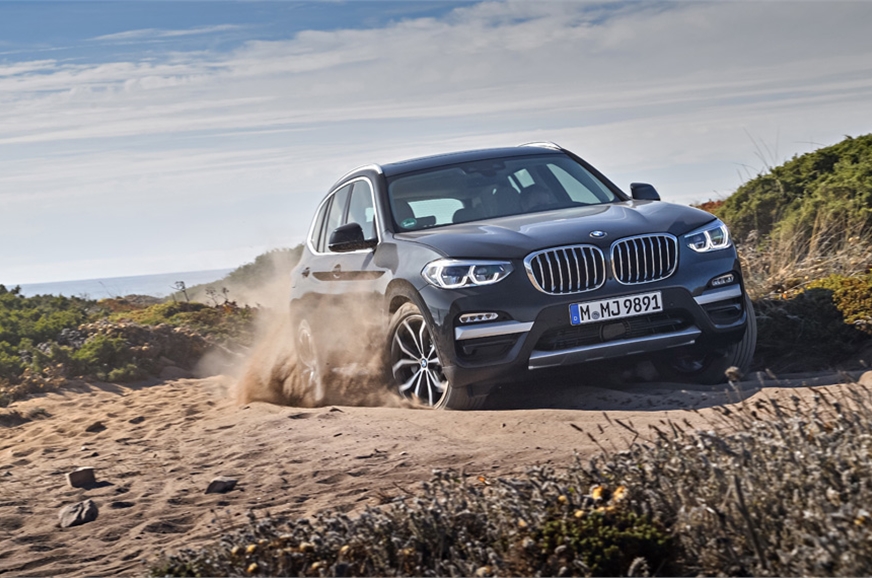
What is it?
The third-generation X3 carries on BMW’s tradition of making sporty but practical SUVs. Where the first-generation car was clearly focused on delivering driving pleasure and sporty dynamics, and the second-generation X3 was more practical, this new car promises to deliver both, more luxury and more driving pleasure.
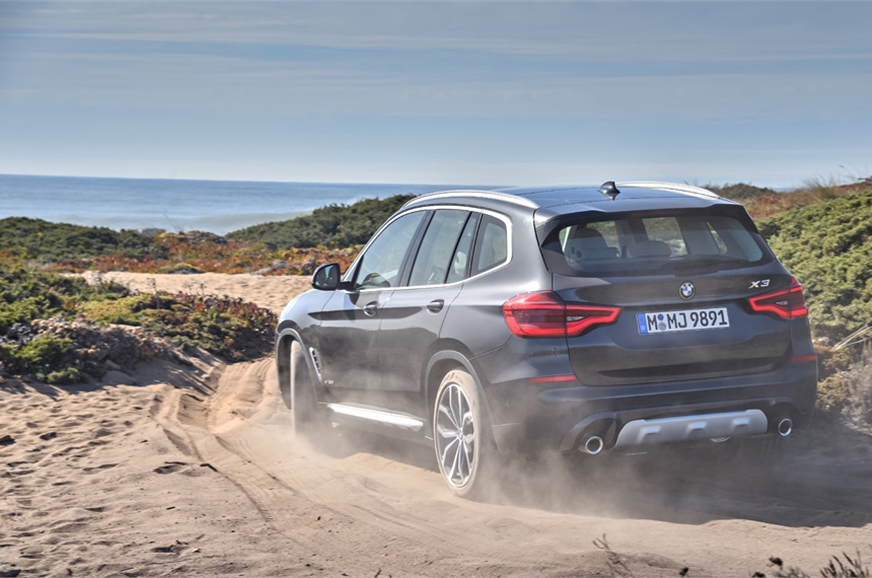
Set to rival the Audi Q5 and Mercedes GLC when it launches towards the middle of 2018, the new X3 is built on a chassis that is considerably stiffer and 55kgs lighter than the one on the car it replaces. This has been done by using more high-strength steel and aluminium than the second-generation car.
The X3, however, isn’t much larger on the outside. Its 4,708mm length, and also its width, are similar to that of the outgoing car. Where BMW engineers and designers have made more space, is between the wheels. So this all-new X3 gets an approximately 50mm-longer wheelbase for more space on the inside.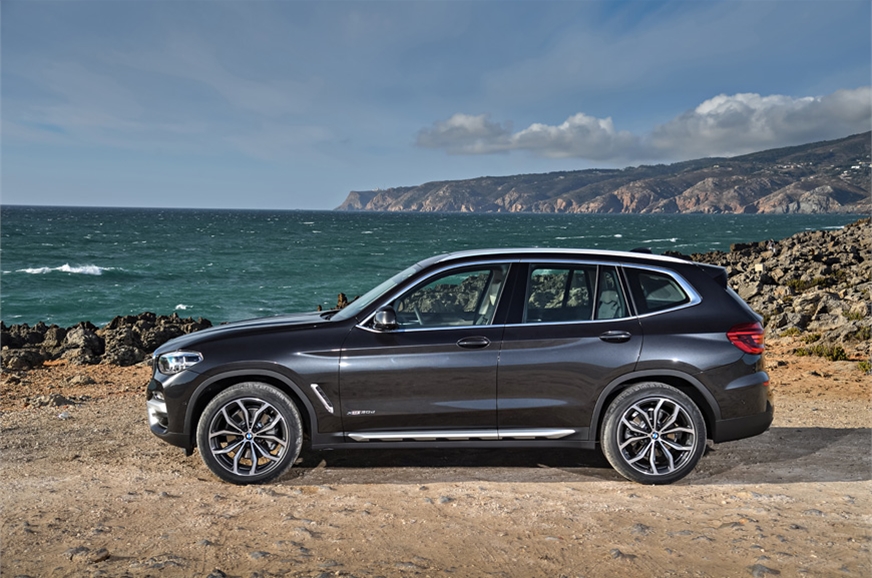
What BMW has also done, to sort of compensate for the car not being much larger on the outside, is give it a larger and more prominent ‘kidney’ grille. It is taller, wider and more three-dimensional in nature now. The variable geometry slats protrude out ahead of the frame. And it’s not just the grille, the entire cowl or nose has been made larger. The double-barrelled headlights are placed higher, the bonnet is wider and the chin has been designed as if to allow air to flow through the engine bay in a controlled manner.
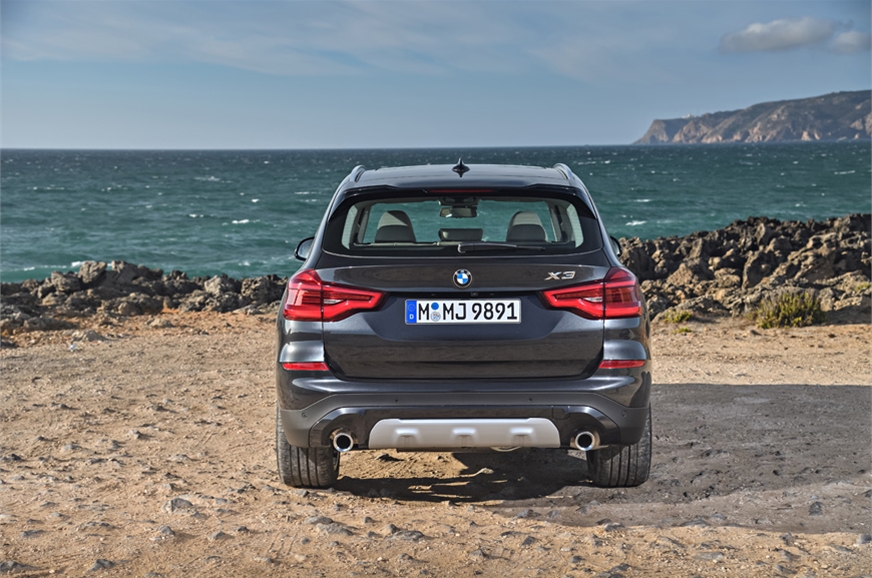
The glass house or cabin of the X3 actually looks similar to that of the second-generation car and while the very attractive tail-lights and hatch are very different, and the wheel arches are larger, the impression that the rest of the new X3 delivers is that of car that’s gently evolved rather than taken a big step ahead.
Today, we have two versions at our disposal. The first is the 265hp 30d, BMW’s sublime three-litre diesel that seems to just get better and better every time we drive it. And then there’s the new 360hp M40i M Performance – a car BMW could get to India to take on the Mercedes GLC 43 AMG.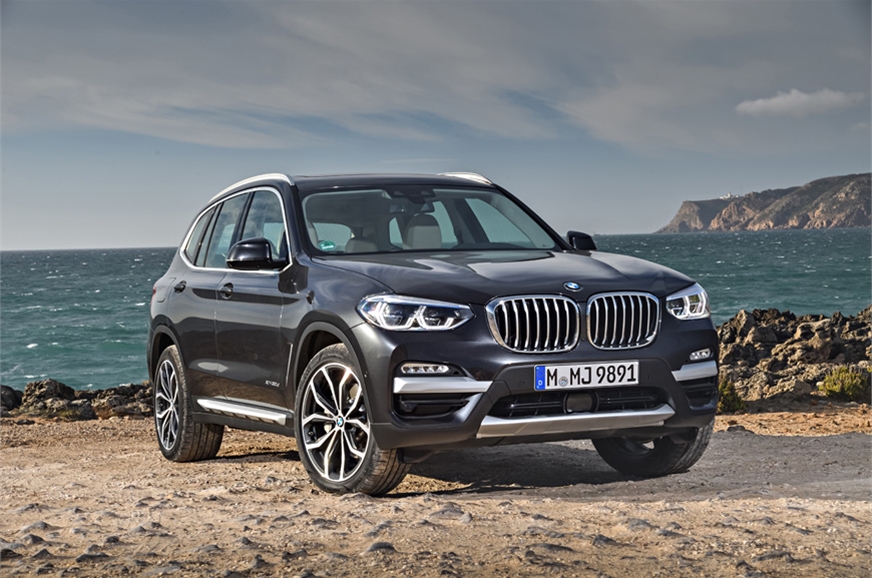
What’s it like on the inside?
The interior of the new BMW X3 follows in the footsteps of the new 5-series. The hexagonal form, with its bevelled edges, plays a central role in the interior, and the layered effect used gives the beautifully built insides a big lift. The padded dash and door pads give the cabin a well-crafted look and the design of the digital-only instrument panel and central console complement each other perfectly. Not only is plastic quality and fit and finish top drawer, but what adds to this melange are the superbly crafted metallic highlights seen all over the cabin. We just love those chunky silvered-over window buttons. And that three-spoke M Sport steering wheel just hit the spot.
BMW’s iDrive has been the best screen-based control interface for some time now and this new-generation unit just takes it to the next level. The wide screen is super-sharp and can be controlled in myriad ways – you can do it via the rotary iDrive controller, the touchscreen, gesture control or even voice commands – making it unique.
When it comes to space, the cabin is only marginally larger than the second-generation X3; and much of this is due to the longer wheelbase. Still comfort levels are much higher. The new-generation seats have a wider and more comfortable base, the back and shoulder support are much improved and the front seats seem to have been upgraded from 3-series levels of comfort to 5-series levels.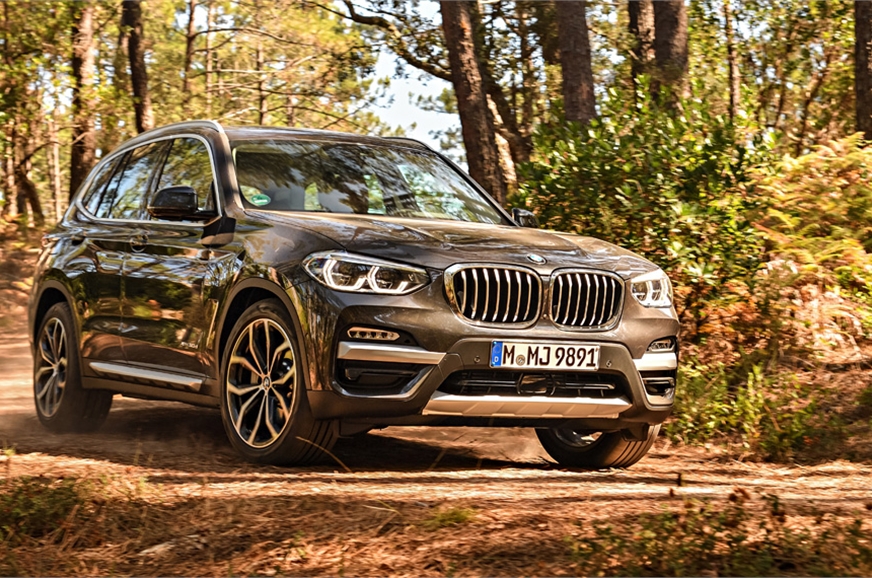
There is a bit more space in the rear as well. Knee room is marginally more than the earlier X3, while the back rest is supportive around the shoulders and the lower back and because you are sat a bit higher, visibility out the front is also a bit nicer. Passengers sat in the rear get three-zone climate control and the rear seats can be split 40:20:40 for an expanded, seat-down capacity of a massive 1,600 litres.
Elsewhere, the standard-fitted acoustic glazing of the windscreen contributes to the extremely low noise levels in the interior. The two front-side windows are also available with acoustic glazing as an option, ensuring that even less of the wind noise generated around the exterior mirror caps makes it into the interior.
The new X3 also gets a few delightful features like the screen-based ‘display key’ familiar from the BMW 7-series and 5-series. It can be used to start the fans in the car to keep the air circulating, and if your car is parked in a secure area, you can even drop the windows to let the hot air
What’s it like to drive?
Almost immediately, you become well aware that this new X3 is much more accomplished in the ride and handling department. The ride is very compliant and silent, with the suspension smothering and damping road noise well. Along with receiving greater sound-deadening material, the new X3 also features an ‘acoustic glass’ windscreen with the one that we tested, and even getting acoustic windows. Inside the cabin, the hush is palpable. The suspension has plenty of travel for bad patches; broken roads are thumped over silently and the suspension works so well, pitching and bobbing are only marginally worse than on an equivalent-size sedan. Some of this progress is also because efforts have been made to reduce the unsprung mass through the use of aluminium components and hollow anti-roll bars.
The X3, however, does feel like a big, tall SUV on a twisty road. There’s a bit more roll in corners than you would expect and this initially is somewhat disconcerting. But get accustomed to that, and the X3 allows you to drive from apex-to-apex with a fair amount of energy. The steering on this new car is much improved, offering more accuracy and a bit more feel. This is true of the brakes as well, which give you much more confidence.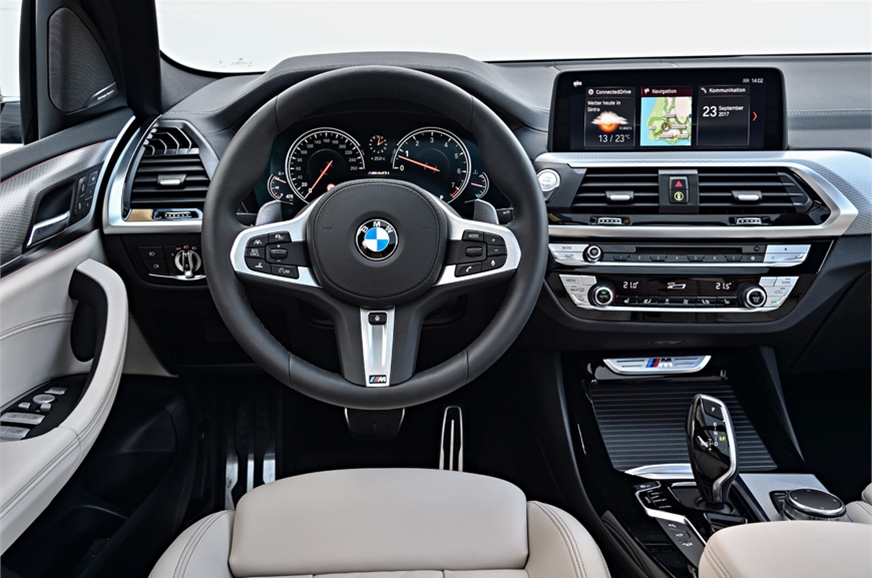
The most popular engine in India will undoubtedly prove to be the 190hp 2.0 diesel. The four-cylinder is used in almost every BMW car in India, and is expected to come to India first. It will be followed by the 265hp 30d, BMW’s sublime straight-six diesel, the one we drove. No prizes for guessing that the drive was super smooth and refined, even by modern diesel standards. However, the X3 didn’t prove to be as refined as the 530d, a bit more diesel boom creeping past the firewall. Punch in the midrange and the engine’s ability to pull all the way past 5,000rpm is just as impressive. Yes, that typical diesel spike is lacking and at times you do miss it, but what you get in its place is a wide powerband and a diesel engine that uniquely loves to spin fast. Where most diesels struggle and strain when you spin them fast, this engine almost always feels effortless, and that sometimes makes all the difference. Step hard on the throttle and it feels like a bomb h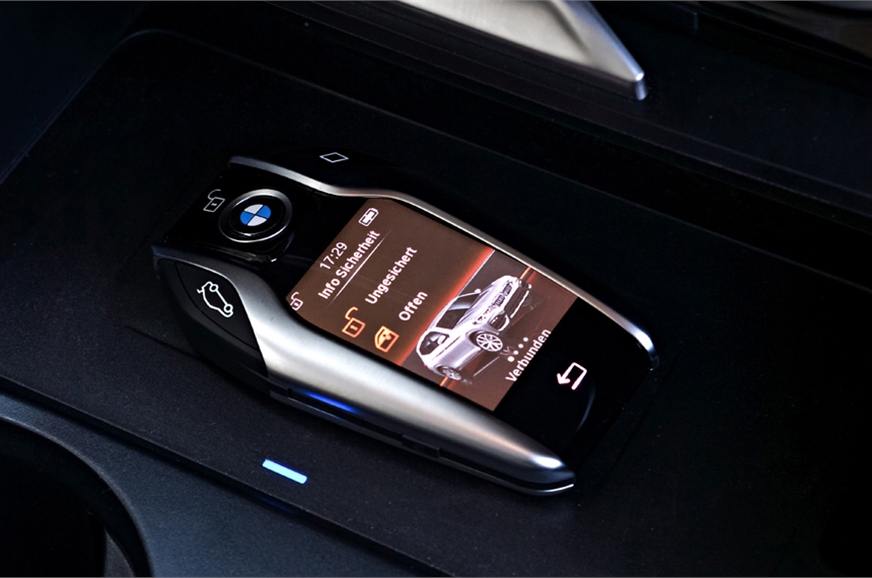
We also drove the M Performance version, or the M 40i. With a lower, stiffer suspension and 360hp, it was both very quick and fun: of course. It felt much more confident in high-speed corners and the steering weight and feel were better still. Going forward, what can you say about BMW’s petrol turbo-six? It delivers almost everything you want from a petrol engine. And it just feels unburstable.
Still the driving experience isn’t nearly as stirring as something like a Porsche Macan. The X3 doesn’t feel as confident as a hot hatch on its favourite road, there’s a bit of shuffling as corners tighten and then the ESP cuts in so early, you either stay well away from that limit or switch it off; not ideal.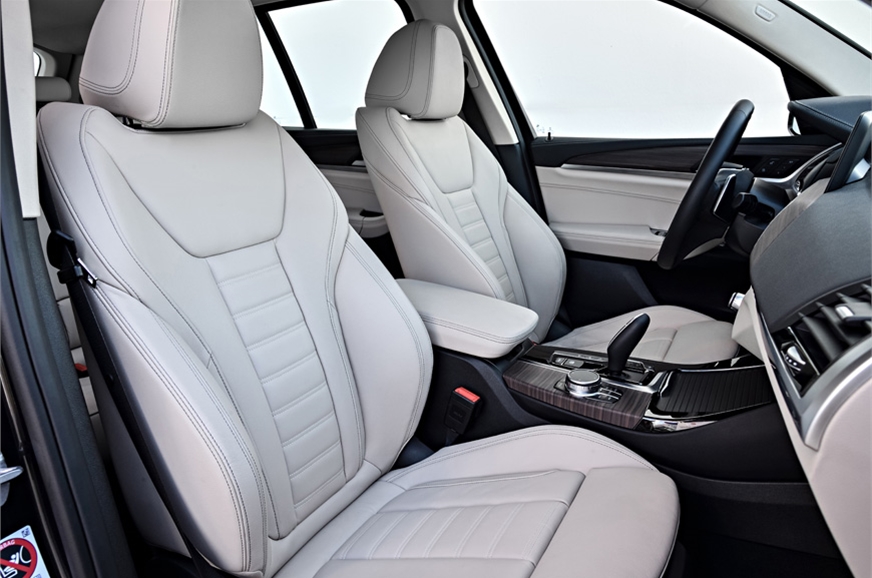
Should I buy one?
The new X3 rides better, is nicer to drive, the interior is a big step up from competition and it is better-equipped too. So clearly, this is an SUV you need to keep on your short list. But how aggressively will BMW price it? And is it better than the Merc GLC or the yet-to-be-launched Audi Q5? We’ll just have to wait for all three cars to be available to us in India at the same time. But until then, keep an eye on this one – it just might have an edge.
[“Source-autocarindia”]





